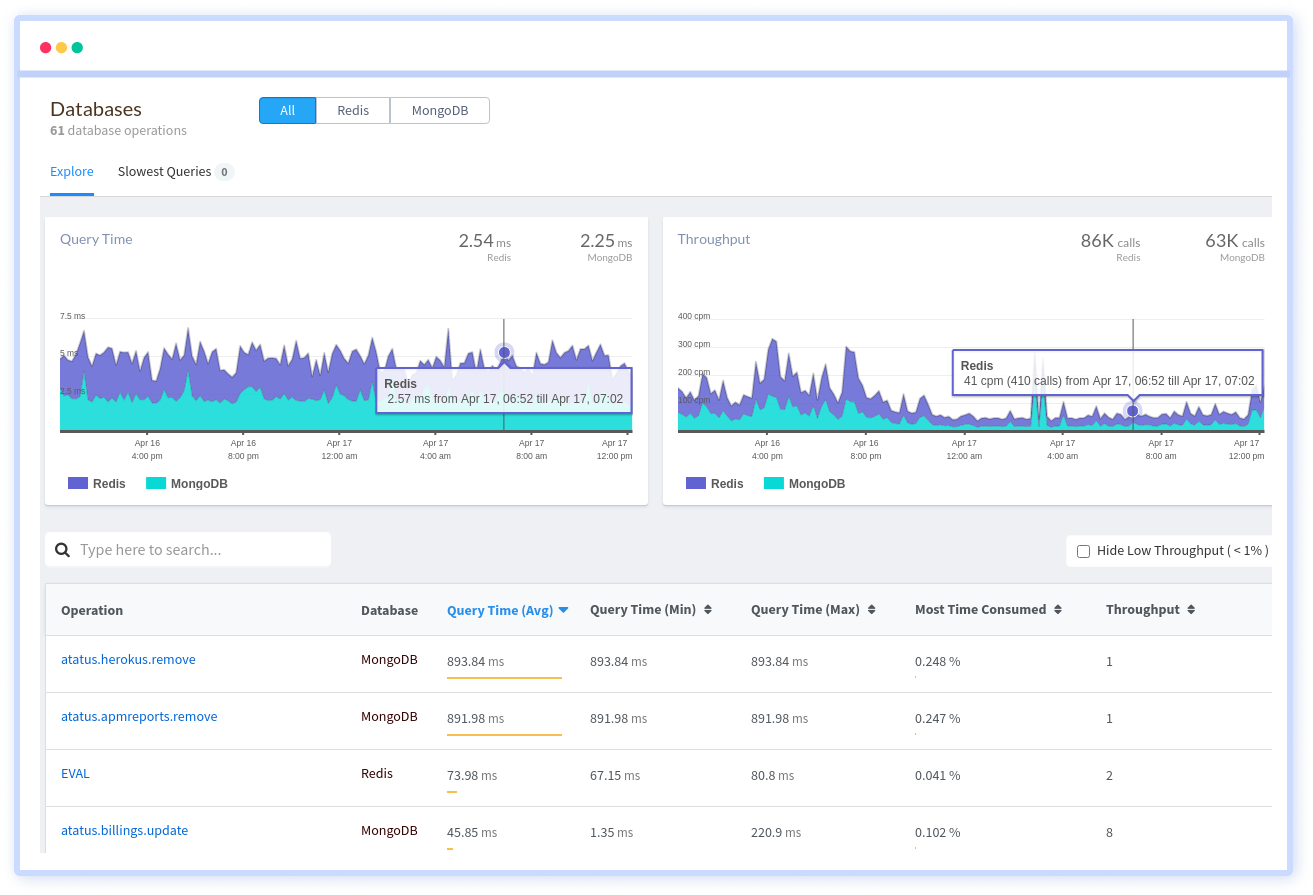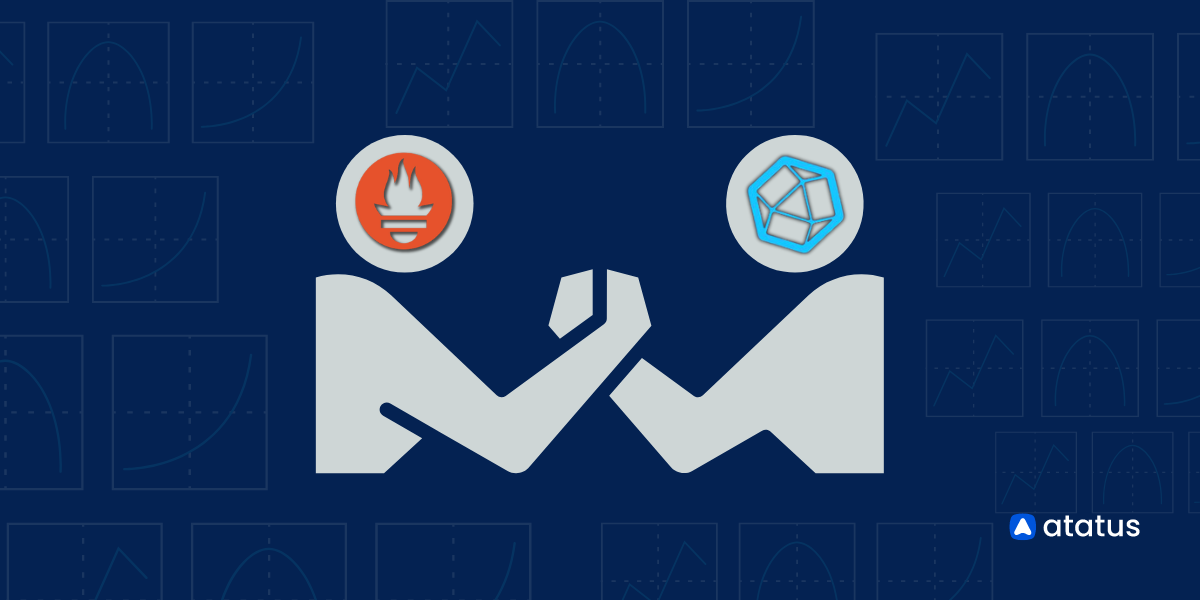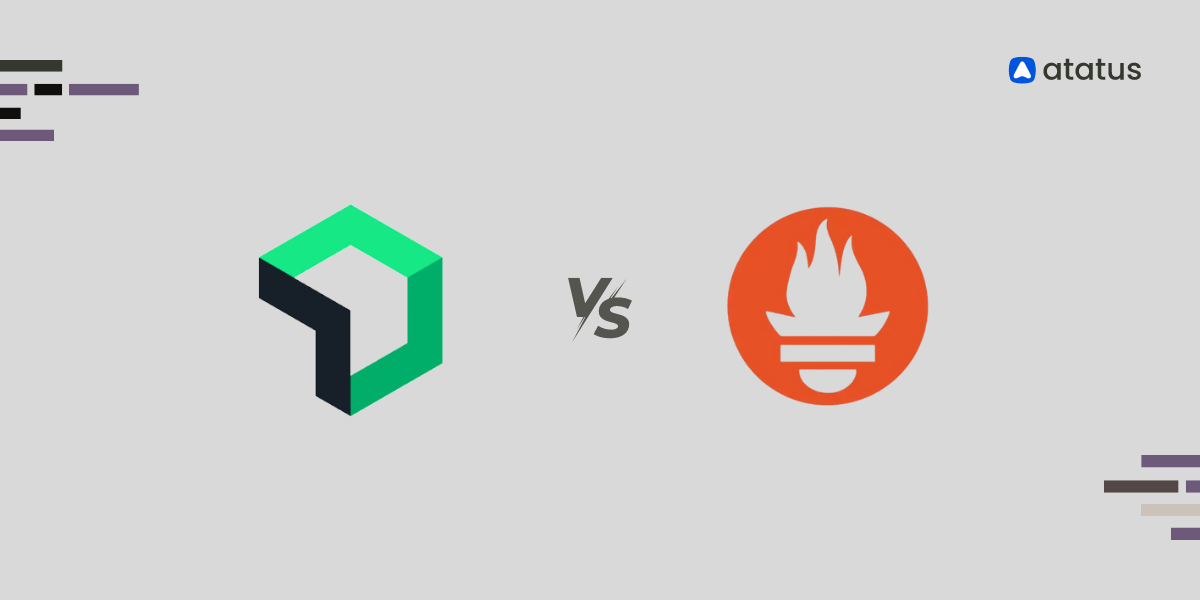Prometheus vs InfluxDB: Features, Similarities and Differences
In time-series databases, the choice between Prometheus and InfluxDB is often essential for businesses and developers. These two OSSs (Operations Support System) offer better solutions for managing and analyzing time-stamped data yet diverge in their approaches, features, and use cases. Understanding differences and shared functionalities between Prometheus and InfluxDB becomes a primary need as organizations navigate the complexities of handling vast streams of time-series data.
Prometheus, focused on monitoring and alerting, has gained widespread adoption within cloud-native environments and microservices architectures. Alternatively, InfluxDB boasts scalability and flexibility, supplying to a broader spectrum of use cases beyond monitoring.
In this explanation, we dissect and compare these two time-series databases. We will discuss deep into their core features, examining their similarities and differences, enabling readers to gather insights and make informed decisions when selecting the better solution for their time-series data management needs. From data models to query languages, scalability to integration, this detailed analysis will help you to gain the knowledge necessary to navigate the Prometheus versus InfluxDB with confidence and clarity.
Table Of Contents:
- Prometheus and its Features
- InfluxDB and its Features
- Prometheus Use Cases
- InfluxDB Use Cases
- Configuring Open-source Grafana with Prometheus
- Configuring Open-source Grafana with InfluxDB
- Comparison: Prometheus vs. InfluxDB
Prometheus and its Features
Prometheus stands high as an open-source monitoring and alerting toolkit, revered for its simplicity in managing time-series data. Designed with cloud-native environments and microservices architectures. Prometheus offers a solution for monitoring a wide array of systems and services.
Prometheus provides a multi-dimensional data model, metric names and key-value pairs known as labels. This model efficiently queries and aggregates time-series data, enabling users to gain valuable insights into the performance and health of their infrastructure.
One of Prometheus' defining features is its powerful query language, PromQL. Created specifically for time-series data, PromQL allows users to easily perform complex queries, aggregations, and transformations easily, facilitating advanced monitoring and analysis.
Prometheus operates on a pull-based model, periodically scraping metrics from instrumented applications and services. This approach provides flexibility in monitoring diverse environments and ensures visibility into system metrics.
Supported by an open-source community, Prometheus boasts a rich system of integrations and extensions. It integrates with popular tools like Grafana for visualization and AlertManager for alerting.
Key features of Prometheus
i.) Multi-dimensional Data Model: Prometheus utilizes a multi-dimensional data model with metric names and key-value pairs called labels. This model allows for flexible and efficient querying of time-series data, enabling users to gain insights into system performance.
ii.) PromQL: Prometheus Query Language (PromQL) is a powerful query language created specifically for time-series data. It supports functions for aggregation, filtering, and mathematical operations, facilitating advanced monitoring and analysis.
iii.) Pull-Based Data Collection: Prometheus operates on a pull-based model, where it periodically gains metrics from instrumented applications and services. This approach provides flexibility in monitoring various environments.
iv.) Scalability: While primarily designed for small to medium-scale deployments, Prometheus supports sharding and federation for scalability. However, it may face challenges in managing large volumes of data or high cardinality.
v.)Local On-Disk Storage Engine: Prometheus uses a local on-disk storage engine optimized for efficient querying of recent data. It is not designed for long-term storage or historical analysis.
vi.) Integrations: Prometheus integrates well with Kubernetes and cloud-native environments, with native support for metrics exposition from applications and services through client libraries and exporters.
InfluxDB and its Features
InfluxDB is a strong player in time-series databases, known for easily handling lots of time-stamped data. InfluxDB organizes data in a special way called a time-series model. This means it's good at storing many different kinds of data and helps users analyze it quickly and effectively.
You have options when it comes to asking questions and getting information from InfluxDB. You can use a language called InfluxQL, which is similar to SQL. But if you need to do more complicated things with your data, there's also Flux, which is like a special language made just for crunching numbers and doing advanced analysis.
InfluxDB is flexible when it comes to importing data. You can either "push" data into it from different sources like devices or sensors or "pull" data from it using tools and integrations. This makes it easy to collect data from all kinds of places.
One of the best things about InfluxDB is how it can grow with your needs. It has different ways to store data, called storage engines, so you can choose the one that works best for you. Whether you're dealing with a small amount of data or a huge amount, InfluxDB has you covered.
InfluxDB works well with other tools too, like Grafana for visualizing data, Telegraf for collecting data, and Kapacitor for processing data in real time. This makes it easy to build a whole system around InfluxDB that fits your needs.
It's a solid choice for anyone who wants to manage and analyze time-series data in different industries and projects.
Key features of InfluxDB
i.) Time-Series Data Model: InfluxDB uses a time-series data model with measurement names and tag-value pairs. This model enables high cardinality data storage, facilitating efficient organization and analysis of various datasets.
ii.) InfluxQL and Flux: InfluxDB offers multiple query languages to suit varying needs. InfluxQL provides a SQL-like interface for querying data, while Flux introduces a functional scripting language for complex data transformations and analytics.
iii.) Push and Pull Data Collection: InfluxDB supports both push and pull data collection methods, offering flexibility in data from various sources, including client libraries, plugins, and third-party integrations.
iv.) Pluggable Storage Engine Architecture: InfluxDB's pluggable storage engine architecture allows users to choose from a range of storage backends, including the default TSM (Time-Structured Merge Tree) engine and the Flux-based query engine, to accommodate varying workloads and performance requirements.
v.) Rich Integration: InfluxDB boasts a rich ecosystem of integrations that is compatible with popular tools like Grafana for visualization, Telegraf for data collection, and Kapacitor for real-time stream processing.
vi.) Scalability: InfluxDB is designed for high scalability and performance, with clustering and sharding capabilities to handle large-scale time-series data across distributed environments.
Prometheus Use Cases
#1 Monitoring Kubernetes and Microservices: Prometheus is widely used to monitor Kubernetes clusters and architectures. It provides native integration with Kubernetes for collecting metrics and monitoring the health of containers, pods, and services.
#2 Alerting and Notification: Prometheus excels in alerting and notification, allowing users to define custom alert rules based on metrics and conditions. It integrates with alert managers to notify stakeholders about potential issues in real-time.
#3 Performance Monitoring: Prometheus is well-suited for monitoring the performance of applications, servers, and infrastructure components. It provides detailed insights into resource utilization, latency, and throughput, enabling proactive performance optimization.
#4 DevOps and Site Reliability Engineering (SRE): Prometheus is a tool for monitoring and troubleshooting production environments for DevOps teams and Site Reliability Engineers (SREs). It offers deep visibility into system metrics and facilitates continuous monitoring and improvement practices.
#5 Cloud-Native Environments: Prometheus is a natural fit for cloud-native environments, such as those based on containerization technologies like Docker and Kubernetes. It offers native support for collecting metrics from containerized applications and services.
InfluxDB Use Cases
#1 IoT Data Management: InfluxDB is commonly used in IoT (Internet of Things) applications for collecting, storing, and analyzing sensor data. It can handle high volumes of time-stamped data streams generated by IoT devices and sensors.
#2 Financial Analytics: InfluxDB is for financial analytics applications that require storing and analyzing time-series data, such as stock market data, cryptocurrency prices, and transaction logs.
#3 Monitoring: InfluxDB is used in energy monitoring systems and smart grids for collecting and analyzing data from smart meters, renewable energy sources, and energy consumption patterns.
#4 Real-Time Analytics: InfluxDB is employed in applications that require real-time data processing and analytics, such as real-time monitoring of network traffic, server performance, and industrial processes.
#5 Healthcare and Medical Monitoring: InfluxDB is utilized in healthcare and medical monitoring systems to store and analyze time-series data from patient monitoring devices, electronic health records (EHR), and medical sensors.
Configuring open-source Grafana with Prometheus
We'll utilize a preconfigured component to quickly demonstrate the capabilities of these two tools together. Assuming you can access a Kubernetes cluster, you must access the Prometheus operator Helm chart.
First, you'll need to install the Helm chart. Depending on your operating system, you can use "brew install helm" for macOS and Linux or "choco install kubernetes-helm" for Windows. Once Helm is installed, run the following Helm commands to install the Prometheus Operator:
Add the Prometheus community Helm repository:
helm repo add prometheus-community https://prometheus-community.github.io/helm-charts
helm repo update
Install the Prometheus Operator:
helm install prometheus-operator prometheus-community/kube-prometheus-stack --namespace <namespace>
After a few moments, the Prometheus Operator should be up and running. You can verify this by running "kubectl get pods" and ensuring all pods are running. Next, access open-source Grafana by executing the following command:
kubectl port-forward -n <namespace> $(kubectl get pods -n <namespace> -l "app.kubernetes.io/name=grafana" -o jsonpath="{.items[0].metadata.name}") 3000:3000
You can now access open-source Grafana. The login credentials to access the panel are "admin" for the username and "prom-operator" for the default password.
Configuring open-source Grafana with InfluxDB
To configure open-source Grafana with InfluxDB, we'll walk through a brief tutorial. Unlike Prometheus, there isn't an all-in-one Helm chart for InfluxDB with open-source Grafana, so we'll need to take a few extra steps. We'll use Helm for the installation process by installing charts for open-source Grafana and InfluxDB separately:
Installing Grafana using Helm:
# Add the Grafana Helm repository
helm repo add grafana https://grafana.github.io/helm-charts
helm repo update
# Install Grafana
helm install grafana grafana/grafana --namespace <namespace>
Installing InfluxDB using Helm:
# Add the InfluxDB Helm repository
helm repo add influxdata https://helm.influxdata.com/
helm repo update
# Install InfluxDB
helm install influxdb influxdata/influxdb --namespace <namespace>
Replace <namespace> with the namespace where you want to install InfluxDB. If you don't specify a namespace, it will install in the default namespace.
i.) Accessing Grafana:
To access Grafana, use the following credentials:
- Username:
admin-user - Password:
admin-password
Forward the application's port using the following command:
kubectl port-forward -n <namespace> $(kubectl get pods -n <namespace> -l "app.kubernetes.io/name=grafana" -o jsonpath="{.items[0].metadata.name}") 3000:3000
Replace <namespace> with the namespace where Grafana is installed.
ii.) Modifying Heapster to feed data to InfluxDB:
Open the Heapster deployment using the following command:
kubectl edit deployment heapster -n kube-system
Within the editor, locate the spec.containers.command section and add the following line as the last line of the command:
--sink=influxdb:http://influxdb-influxdb.default:8086
Save and exit the editor.
iii.) Configuring Grafana Dashboard:
Navigate to the open-source Grafana dashboard and add the InfluxDB data source. Point it to http://influxdb-influxdb.default:8086 and select k8s as the database. Use this rundown of dashboards to configure your own dashboards.
These steps should help you set up Grafana with InfluxDB for monitoring your Kubernetes cluster.
Comparison: Prometheus vs InfluxDB
| Features | Prometheus | InfluxDB |
|---|---|---|
| Data Models | Multi-dimensional with labels. | Time series with tags and measurements |
| Data Collection | Pull-based | Push-based |
| Query Language | PromQL | InfluxQL and Flux |
| Scalability | Primarily for small to medium-scale | Designed for higher Scalability |
| Storage Engine | Local on-disk storage engine | Pluggable storage engine architecture |
| Community | Vibrant open-source community | Active community support |
| Integrations | Native support for Kubernetes, exporters | Integrations with Grafana. |
Conclusion
Both Prometheus and InfluxDB are powerful solutions for managing time-series data, each with unique features, strengths, and ideal use cases.
With its multidimensional data model and PromQL query language, Prometheus excels at monitoring and alerting in cloud-native and microservices environments. It boasts an open-source community and integration with Kubernetes, making it a popular choice for monitoring modern infrastructure.
InfluxDB stands out for its exceptional scalability, flexibility, and versatility. Its support for multiple query languages, including InfluxQL and Flux, and a time-series data model make it suitable for a wide range of use cases beyond monitoring, including IoT applications, financial analytics, and real-time analytics.
While both databases offer robust capabilities, organizations should carefully evaluate their specific requirements, scalability needs, and integration preferences when choosing between Prometheus and InfluxDB.
By understanding the key features, similarities, and differences between Prometheus and InfluxDB, stakeholders can make informed decisions to leverage the strengths of each database and effectively manage time-series data in their environments.
Prometheus Monitoring with Atatus
Atatus is an easy-to-use observability platform, using which you get a complete view of your applications' health. Atatus not only captures errors and performance data but also streamlines incident management, making it a seamless experience. This combination empowers you to quickly spot and resolve issues, ensuring your systems run smoothly and efficiently.

With Atatus, you can monitor your infrastructure's scalability and performance in real-time. It offers deep insights into your applications and intelligent alerting, ensuring that you catch problems before they impact your users.
This synergy enables you to efficiently identify and address issues, allowing your Prometheus monitoring strategy to run seamlessly and enabling you to achieve operational excellence effortlessly.
#1 Solution for Logs, Traces & Metrics
APM
Kubernetes
Logs
Synthetics
RUM
Serverless
Security
More



![Splunk vs Prometheus: A Side-by-Side Comparison [2025 Guide]](/blog/content/images/size/w960/2024/08/Datadog-vs-sentry--13-.png)

